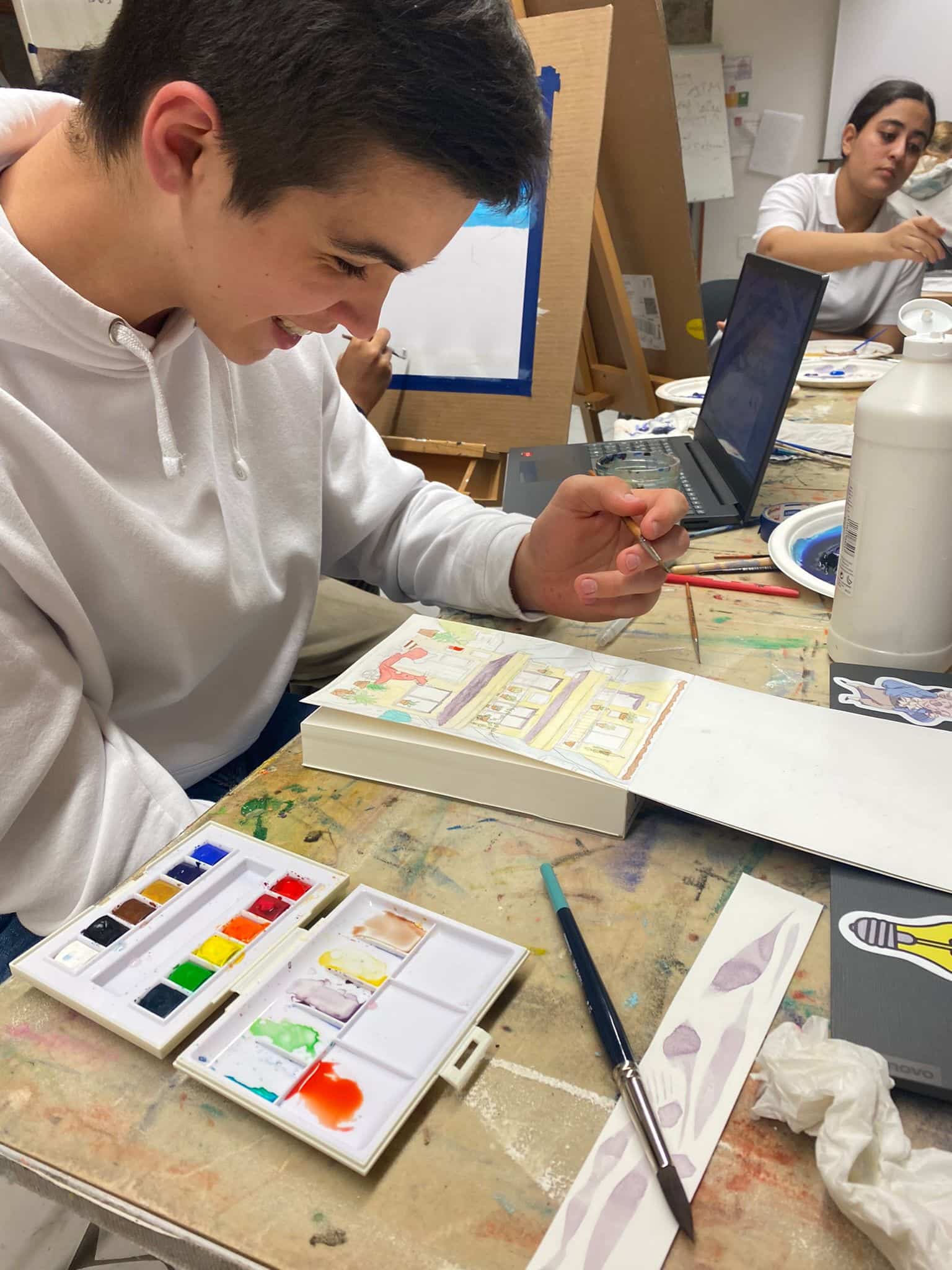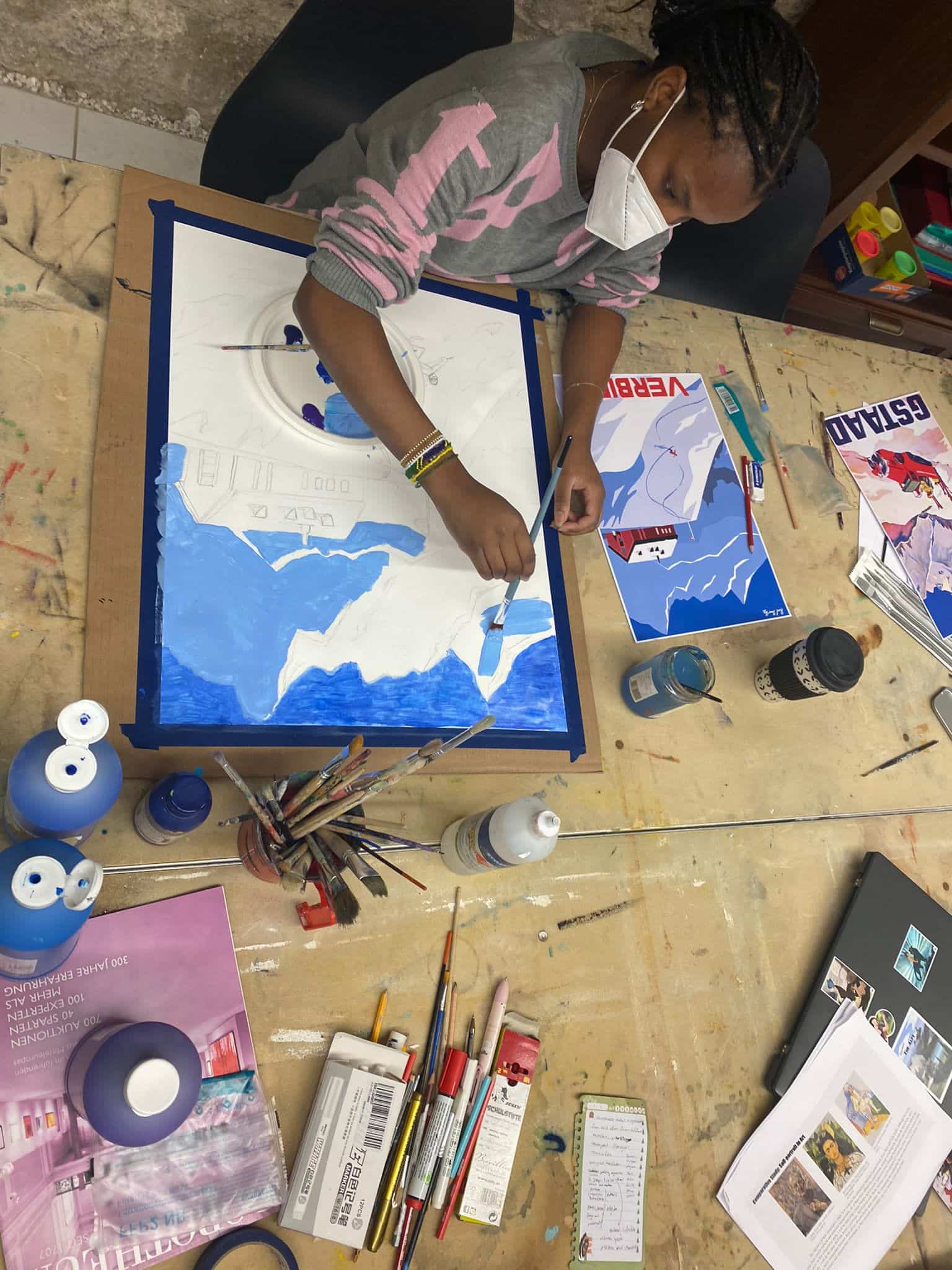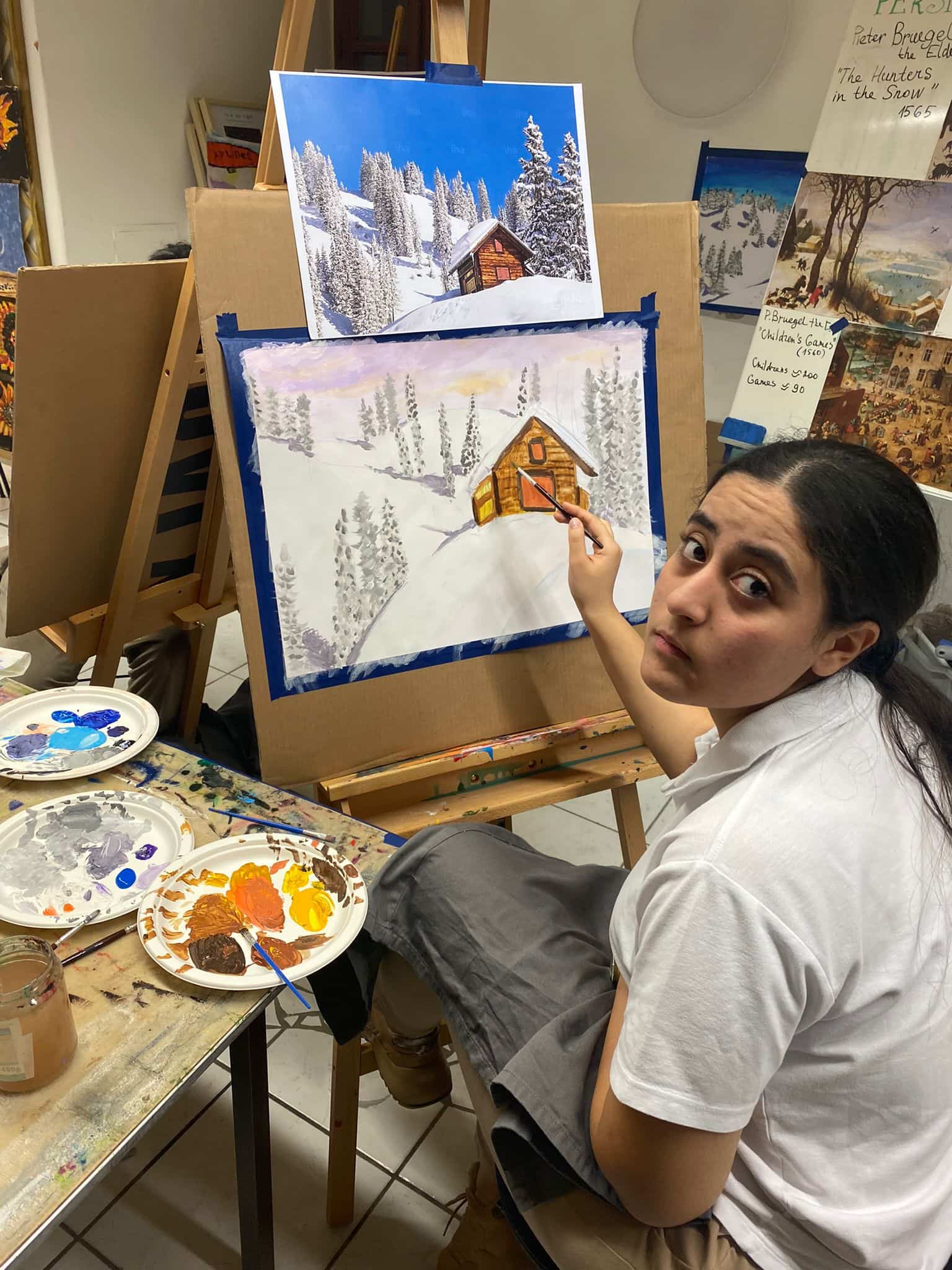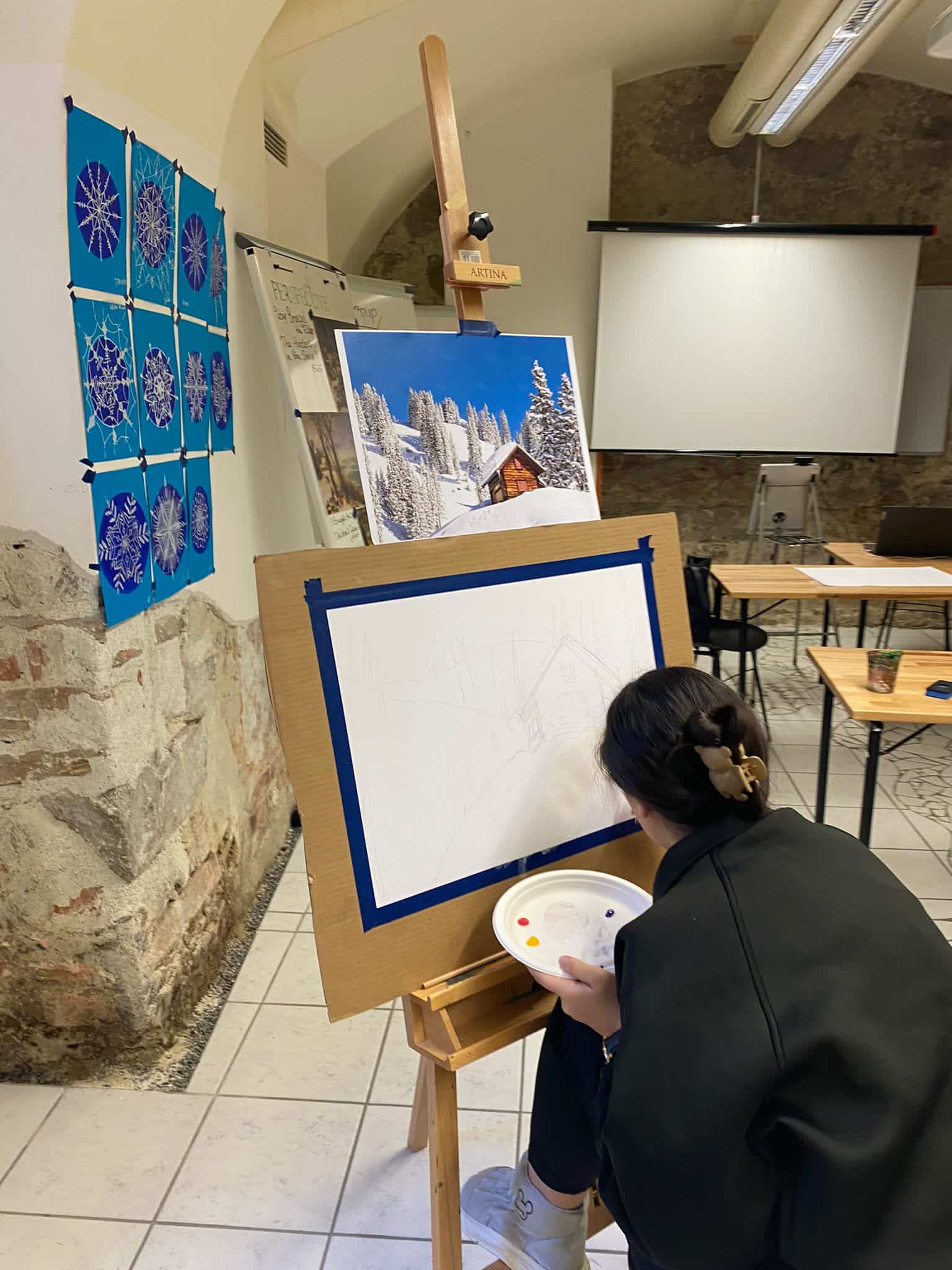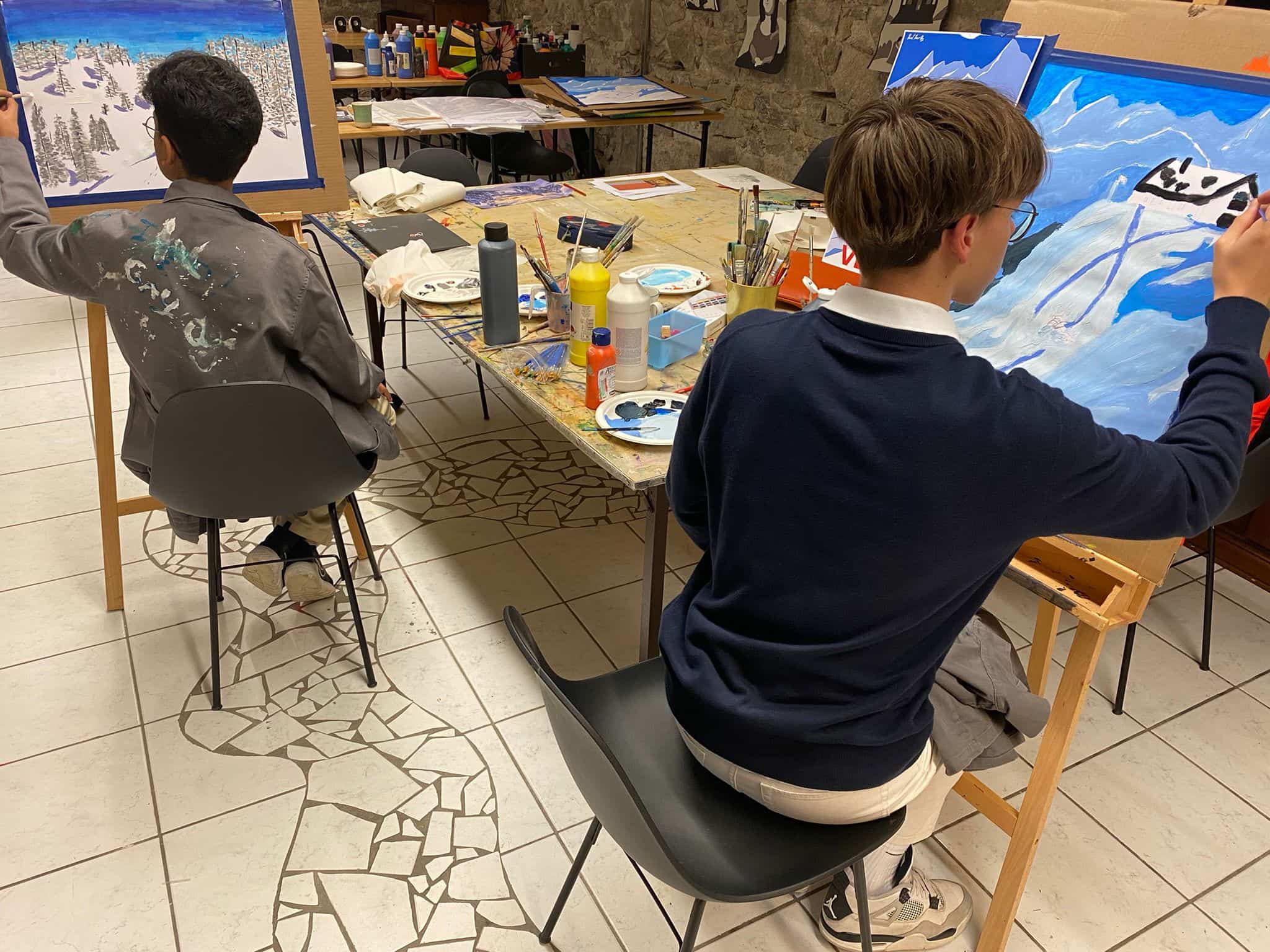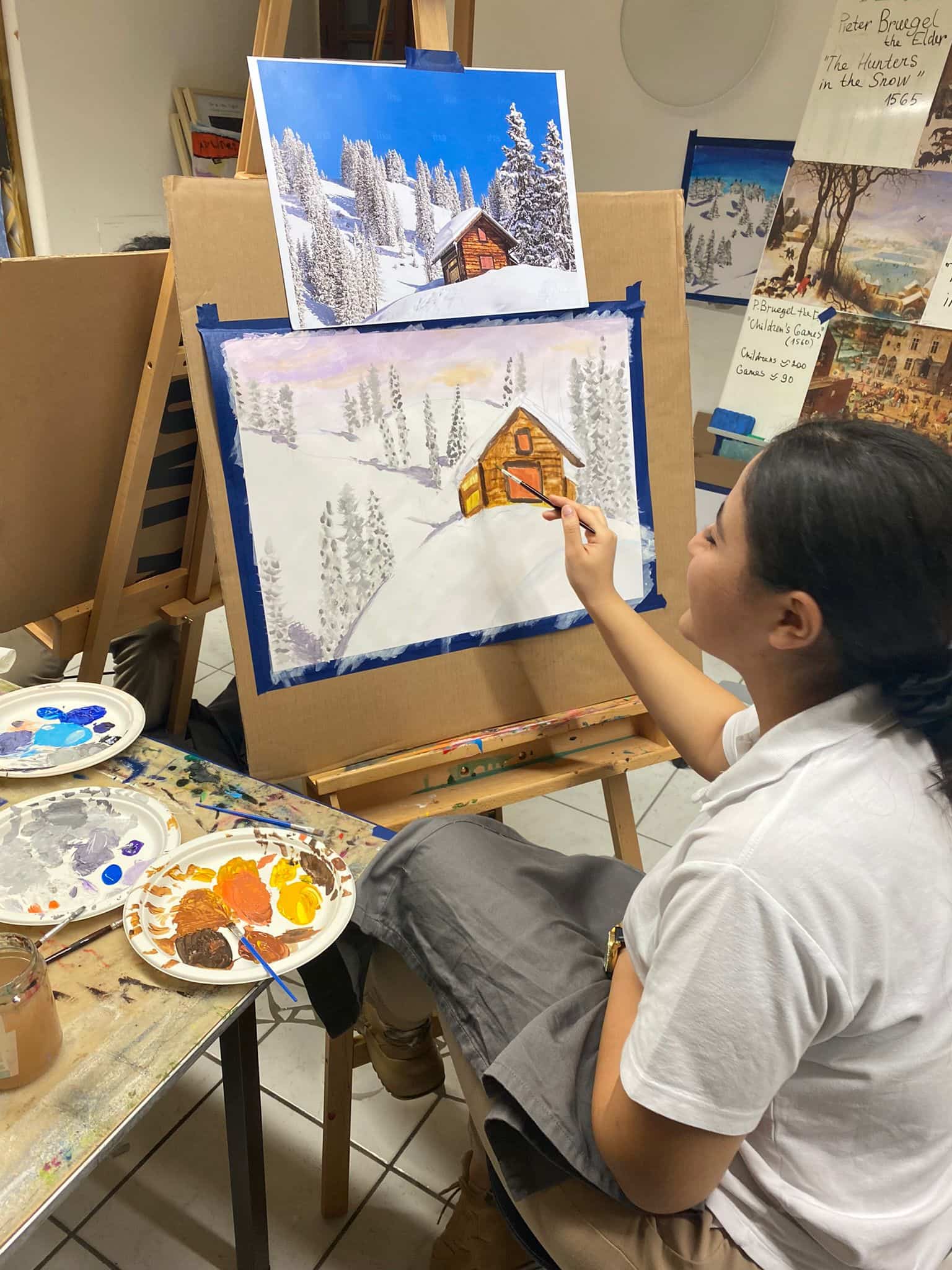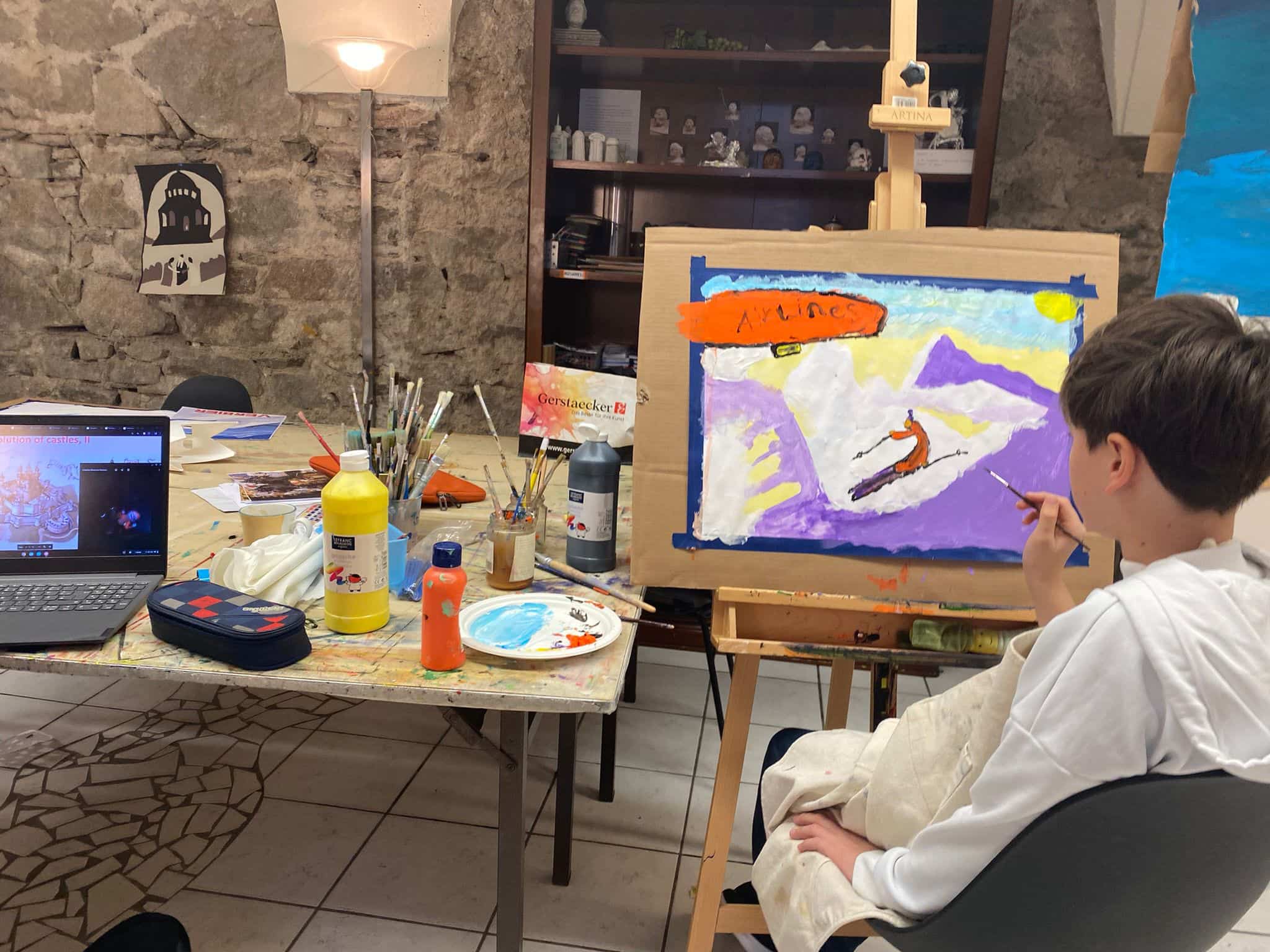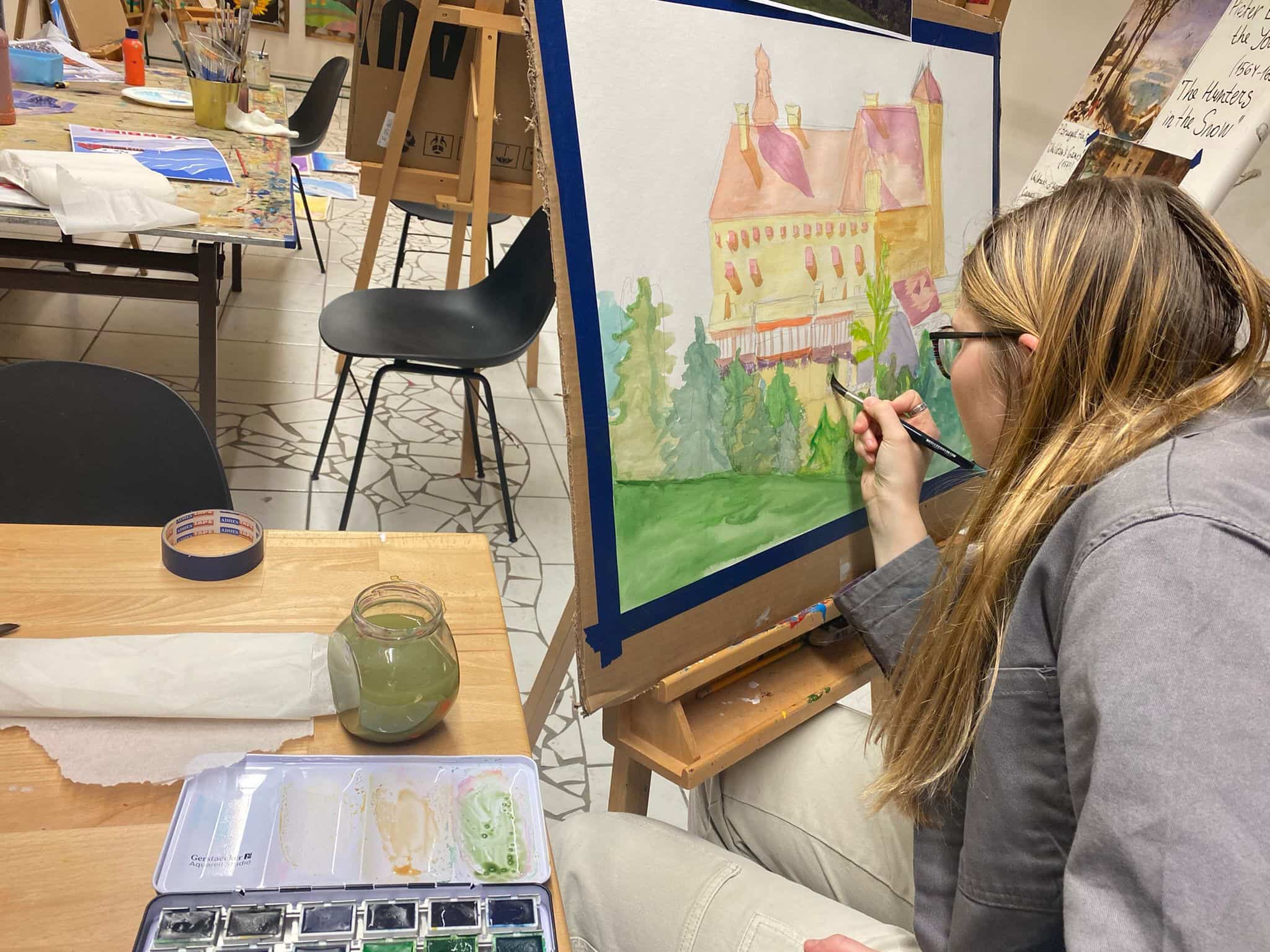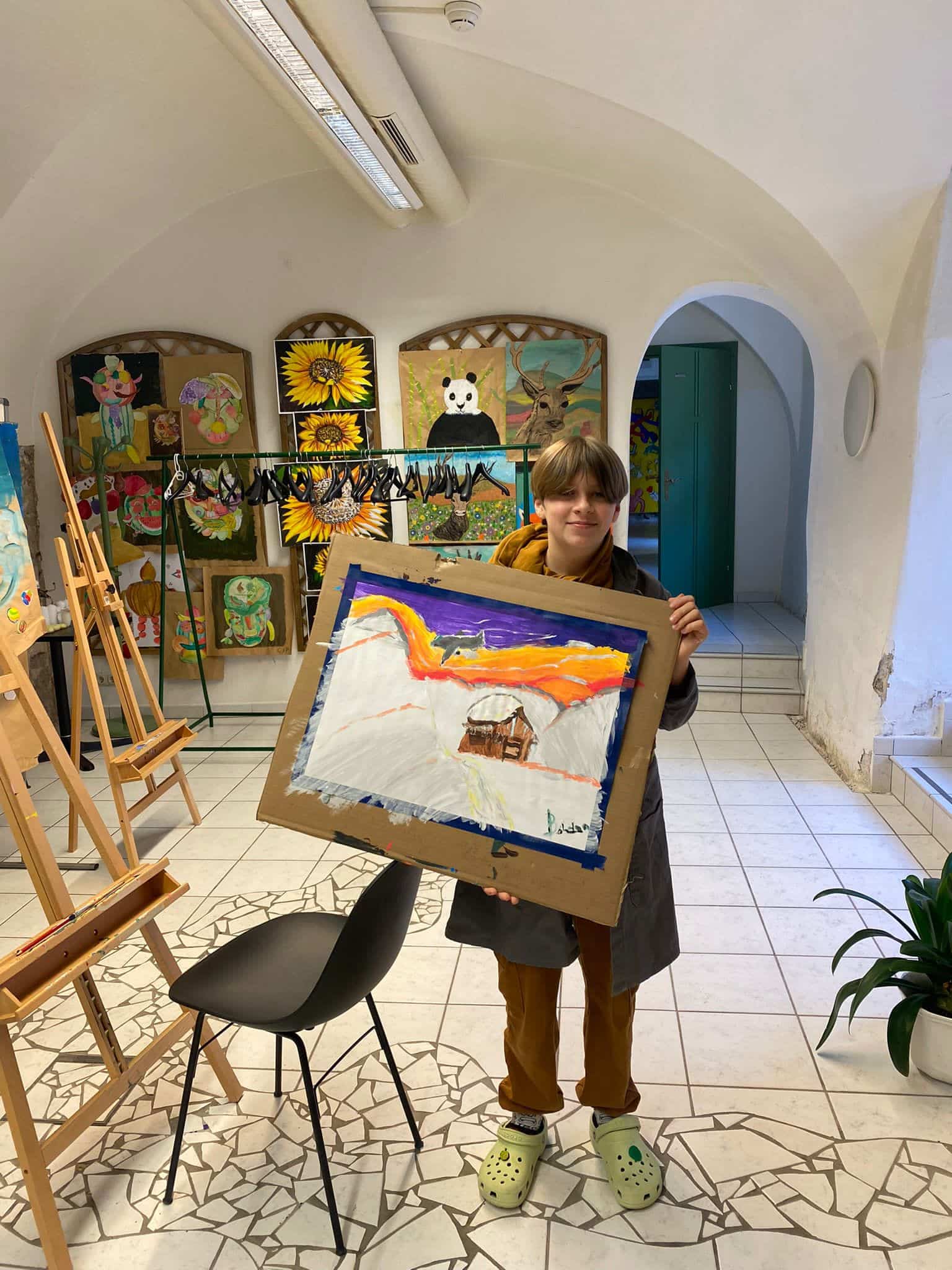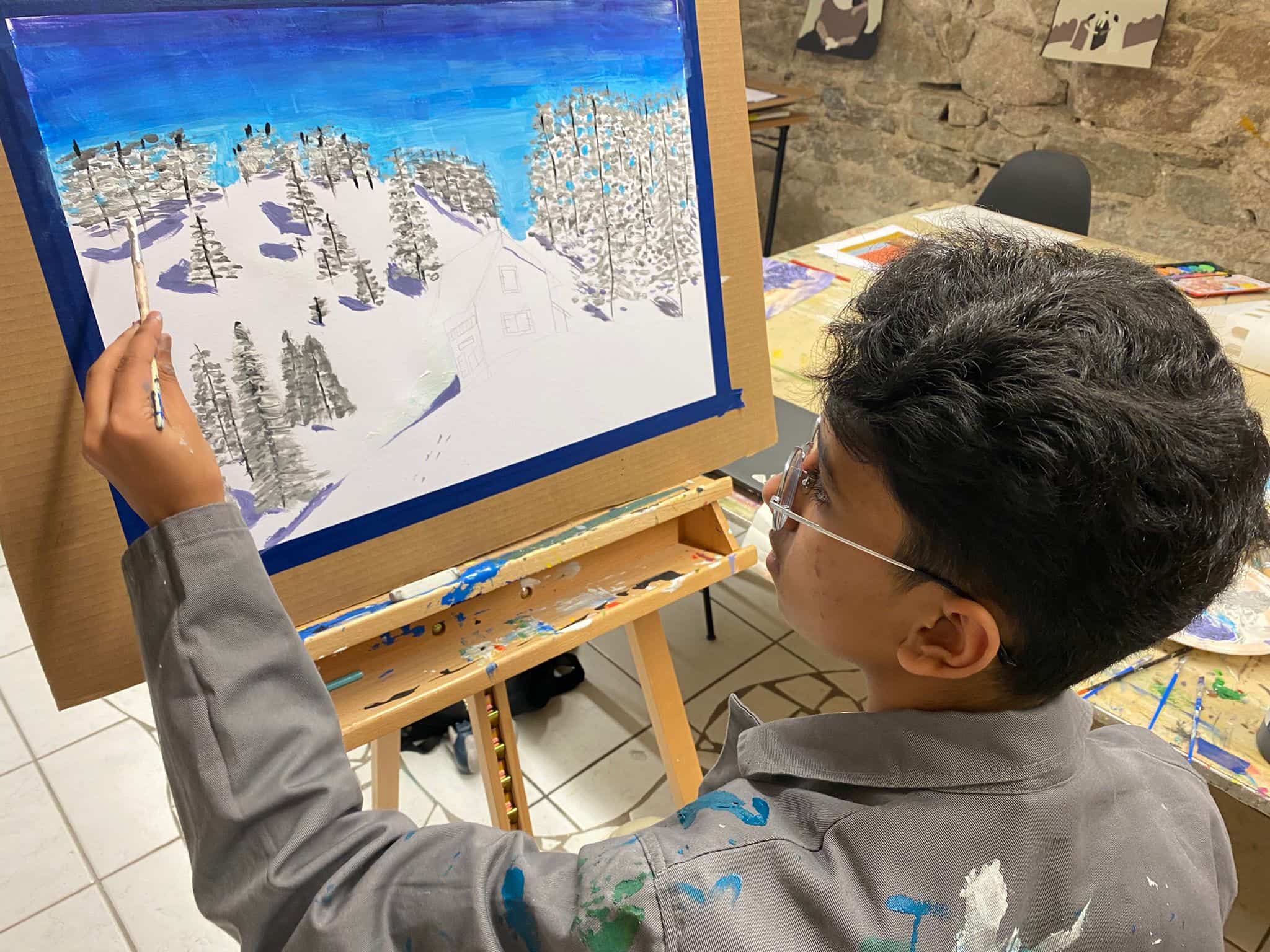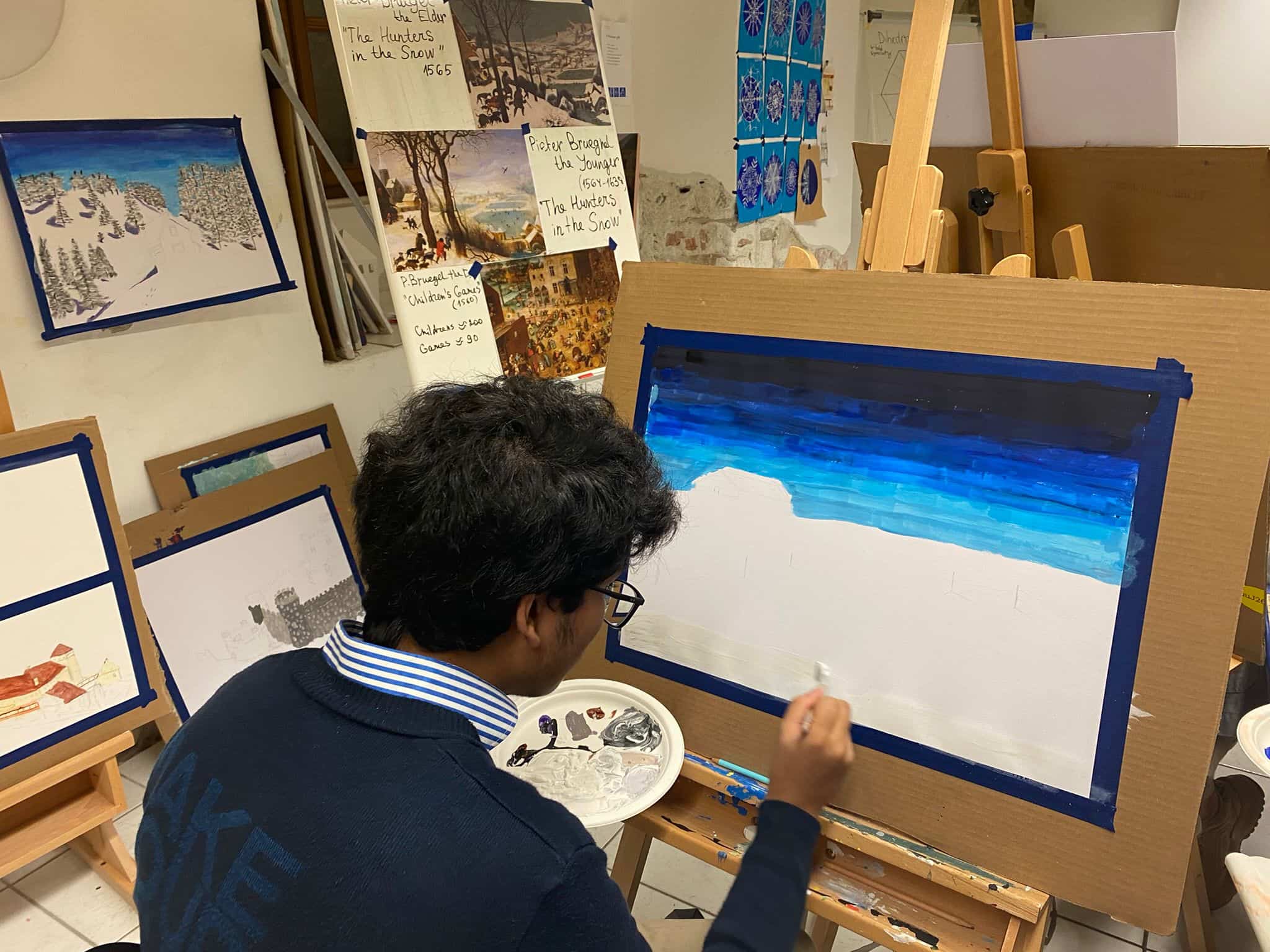Having visited arts galleries all over Vienna, the Kunsthistorisches Museum in particular, our students grew inspired, and decided to imitate the style of Pieter Brueghel.
Pieter Bruegel the Older and Pieter Bruegel the Younger are some of the most significant artists of Dutch and Flemish Renaissance painting, known for their landscapes and peasant scenes.
Students tried to emulate the artistic techniques recreating beautiful landscapes surrounding our school and the wonderful Castle of Krumbach itself.
Here are a few artistic tips that can guide your creative process, while drawing in style of Pieter Bruegel the Older or the Younger:
– Detail and Composition: Both artists excelled in creating detailed scenes bustling with activity. Practice sketching small figures and scenarios in a dynamic arrangement. Build crowded, lively compositions where each element plays a role in the larger picture.
– Landscape and Nature: Bruegel’s landscapes are integral to his works. Draw inspiration from the natural surroundings of Schloss Krumbach. Use a mix of observational drawing and imaginative embellishment to capture a sense of place that’s teeming with life, both human and natural.
– Palette and Lighting: The Bruegels commonly used a natural and somewhat muted palette with occasional vibrant highlights. Experiment with colour mixing to create a similar effect and pay attention to how natural light and shadows interact to give form and depth to the landscape.
– Seasonal Imagery: Emphasise the signs of the season, just like Bruegel did. Since you’re in a winter workshop, focus on the unique aspects of winter—the way snow blankets the landscape, the contrast of warm lights from buildings against the cool tones of shadows and snow, and the activities typical of the season.
– Narrative Elements: Include subtle storytelling in your art. This could be visualized through the actions of the people, their interactions, or even through symbolic gestures or elements that hint at a larger story or social commentary.
– Brushwork: Try to mimic the detailed and meticulous brushwork seen in Bruegel’s paintings. Work on refining your brush control to achieve fine detail in your work, especially in the depiction of figures and foliage.
– Human Element: Even in vast landscapes, the Brueghels managed to convey human experiences and emotions. Ensure your figures are engaged in meaningful ways and that their gestures and expressions tell a story.
We remind you that artistic professionalism is just one of the prominent and unique qualities we foster in our students, in addition to thorough scientific core, mathematical prowess, linguistic diversity, and athletic and cultural activities.

